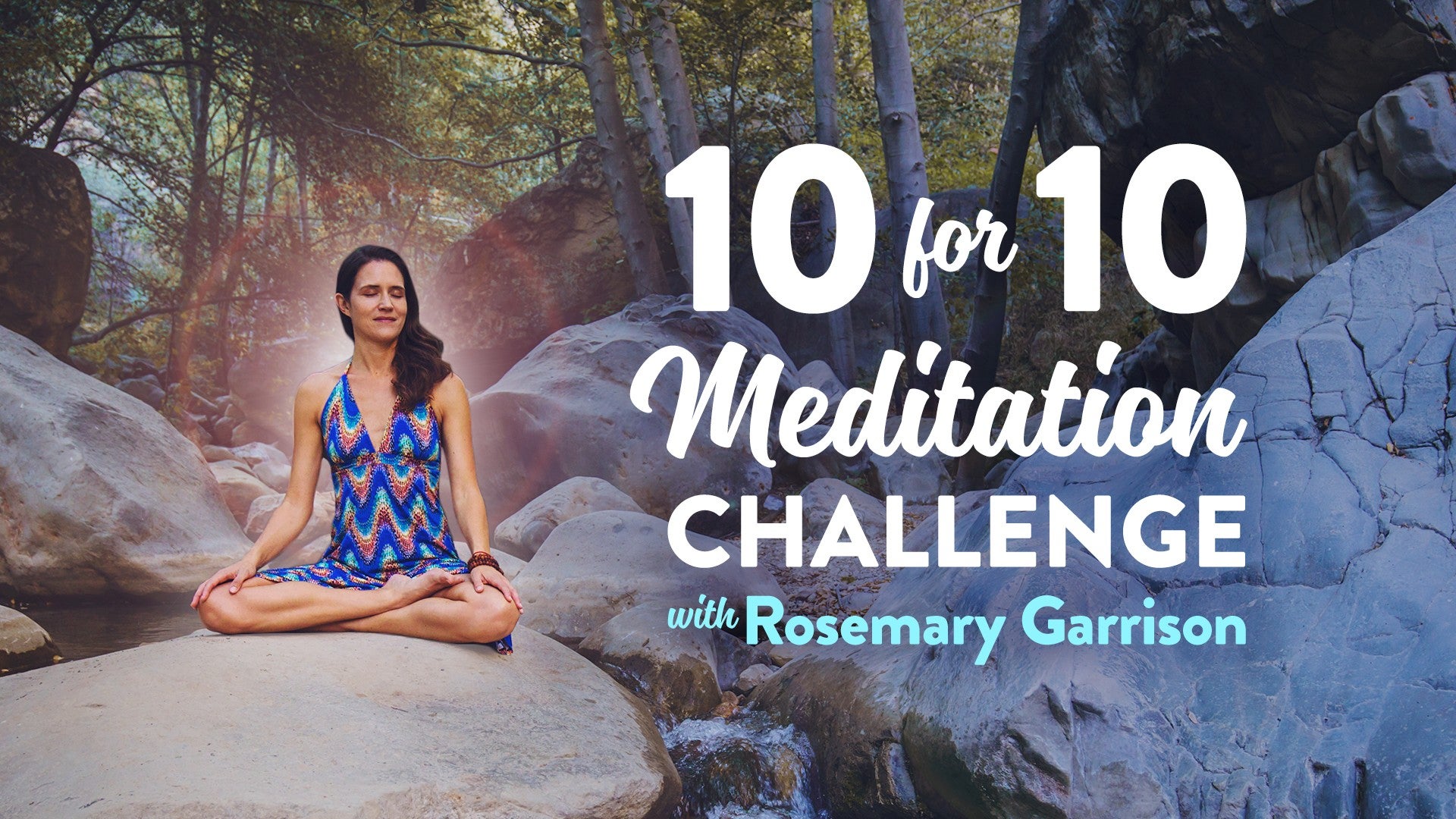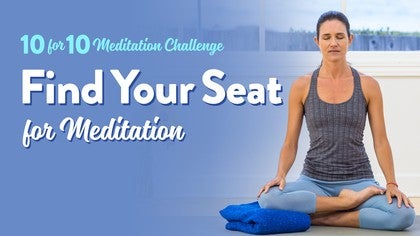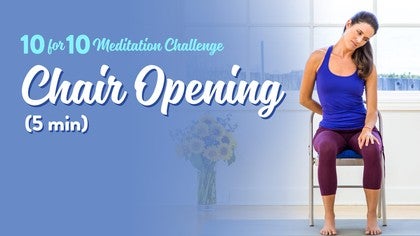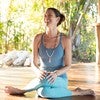Description
About This Video
Transcript
Read Full Transcript
Welcome back. We are going to take a moment or two here to look at some different options for your seat in your meditation and I want to start by saying that ironically sitting is not so easy. It can be really hard on the body even though we do it quite a bit. We're not always super aligned and it can lead to some stress in the back or the knees or the hips. So I'm going to offer a handful of variations and you can just explore with what works best for you. I won't show sitting on a chair today but of course that's a wonderful option if you prefer a chair or even sitting against a wall so that your back has a lot of support. Please feel free. Okay so the first option is just basically an easy cross-legged position or sukhasana. I'm currently propped up on two blankets depending on how open your hips are you might want more. You could also grab a meditation cushion if you have one or a bolster if you happen to have some really comfortable pillows around whatever works for your body. Basic rule of thumb is we want the hips higher than the knees or at least in the same line. Okay so if you're up here make sure that you get a little bit more lift. Okay so here's your first variation and then your hands are resting wherever they're most comfortable. If this is effortless you might try coming out of the cross and just kind of putting one leg in front of the other. And notice how that descends my knees a little lower lifts the sit bones up a little higher and again hands where they're comfortable. If this is effortless you might explore half padmasana taking one foot up into half lotus. However if the knee is fairly far away from the earth grab a blanket or a pillow whatever you have handy and just kind of prop it under the knee you know with a double roll or a single roll as much as you need. Okay over time as you're sitting more and as the hips open you might be able to remove that but no rush. Okay so once you've chosen your basic seat I want to talk about the rest of the body starting with the sit bones and the rotation of the pelvis. Okay so just explore maybe take the hands to the hips rocking forward letting the belly kind of spill out and then rocking back and concaving kind of collapsing into low back. We don't want either we want the middle path so feel into that in your own body equal weight on the sit bones very slight engagement of the abdominal muscles so that you're supporting and lengthening the low back. And then from that steady even seat the spine kind of naturally starts to rise like all the way up through the crown of the head and notice where the neck and the position of the head is most of us have this tendency to kind of lean forward draw that back so the head is balanced even on the neck and you're kind of lifting from the base of the skull. Okay and then the shoulders gently drop back and drop down opening through the heart and a soft gaze or eyes closed. Okay so essentially what we're looking for is this tall spine with a little ease around it on an even seat. Okay so that's one option if the hips are really tight or for whatever reason you prefer kneeling let's show a completely different variation. I'm going to move these blankets off to the side and if you're sitting on your knees your shins it's really nice to have support underneath can be a lot to just sit unsupported there. Okay so maybe a blanket whatever you have handy and spread it out nice and even so there are no ridges under the shins. And let's start with two blocks stacked right on top of each other. All right and then knees together feet open alongside the blocks and then you just ease the sit bones down onto that top block. Okay right obviously this is not hip opener so if your hips are tight this can be a really nice variation. Again hands up or down on the legs or you can rest palm and palm at the base of the lap and same principles even weight on the sit bones tall through the spine lifting the crown of the head and easing shoulders back and down lifting from the base of the skull and then easy through the eyes the brow the jaw. All right just feeling into that if it's effortless you might remove one block and try that. Okay so bottom line keep experimenting with what works for your body especially if you're newer to meditation. I want to say this about pain and discomfort it's a fine line and as you're newer to the practice it can be a little bit subtle to determine what you're experiencing. My basic belief is if you're in pain i.e. kind of a sharp searing really really uncomfortable sensation move get out of it other people may disagree with me but that's what I'm gonna offer and I think you know right if it's really really sharp and severe adjust try a different seat if it's sort of a baseline discomfort dull achy just kind of a wider sensation I would invite you to stay with it right because there's going to be a little bit of discomfort no matter how perfect your seat is and if we're constantly adjusting it's kind of an excuse to get out of the meditation experience okay so if it's mild discomfort stay with it breathe into it be curious about the sensation and if it's sharp and severe move and try a different seat right I hope this is helpful keep exploring let me know what works for you and enjoy namaste
10-Day Meditation Challenge
Comments
You need to be a subscriber to post a comment.
Please Log In or Create an Account to start your free trial.













